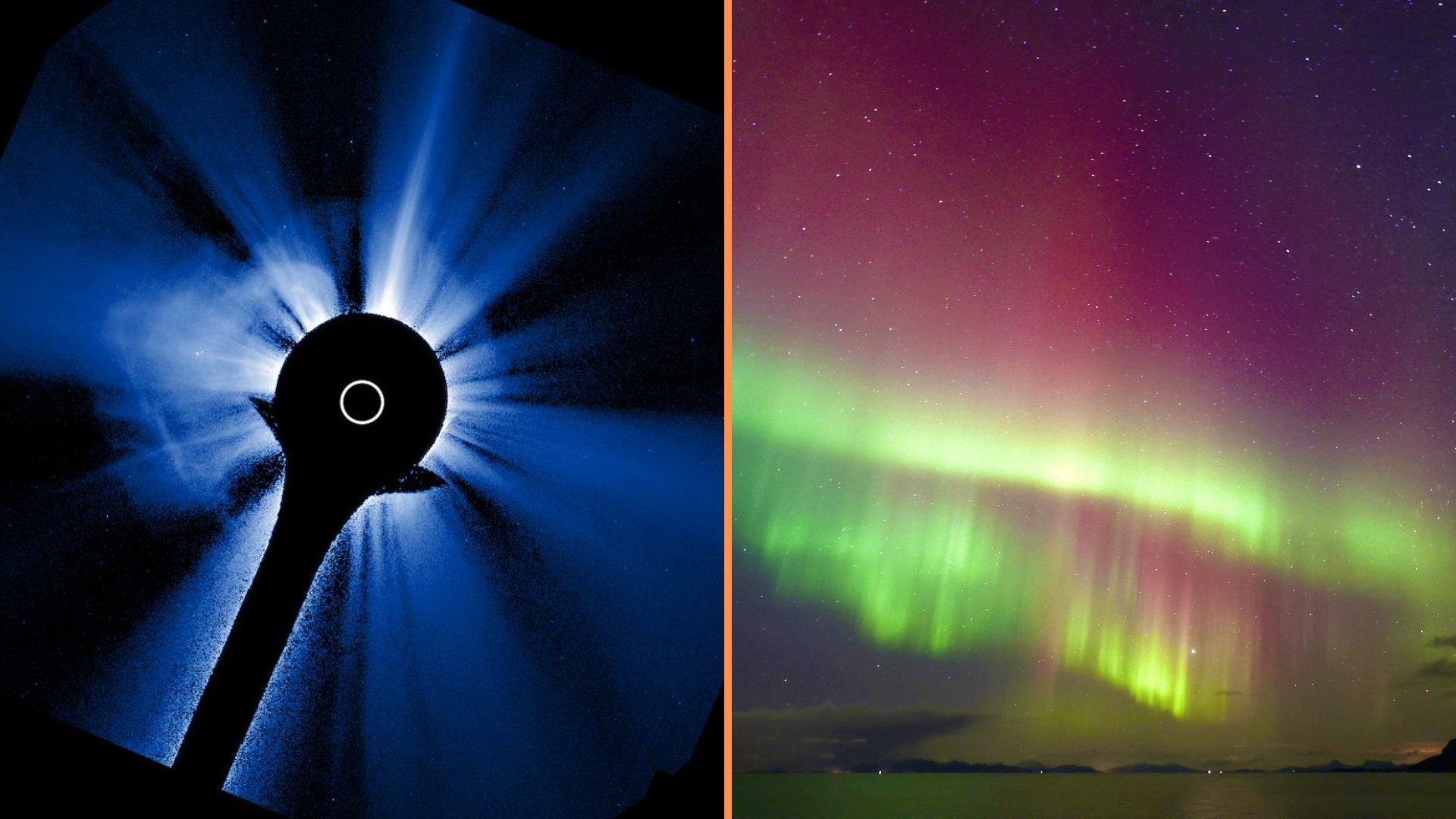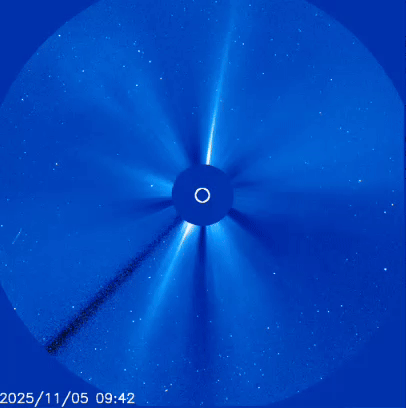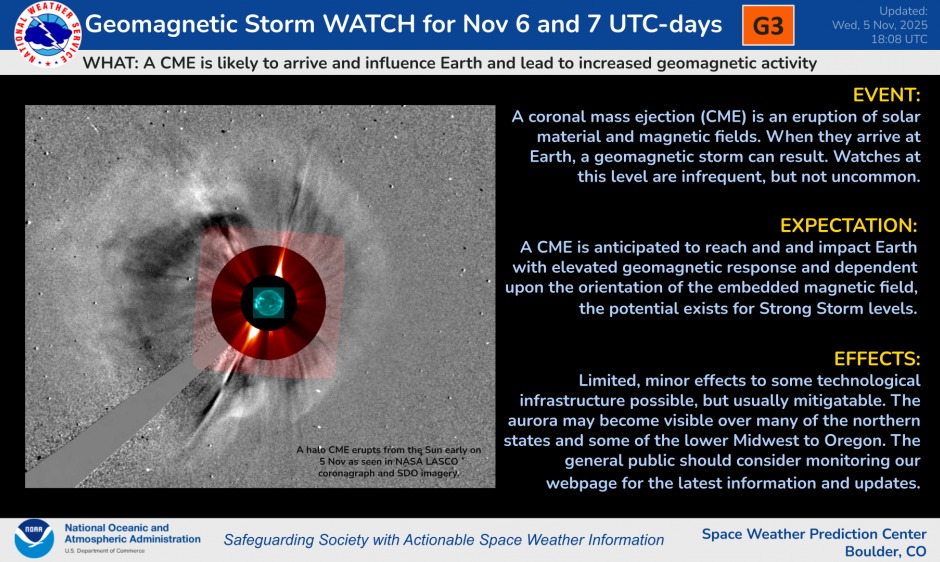Surprise geomagnetic storm arrives early as NOAA warns more solar impacts are on their way today
Northern lights danced overnight and more displays may follow tonight, as solar storms continue.

A geomagnetic storm surprised forecasters overnight as material from recent solar eruptions arrived earlier than expected, briefly reaching strong (G3) levels. Now, NOAA has a G3 geomagnetic storm watch in effect as Earth braces for further impacts from multiple coronal mass ejections (CMEs) launched in quick succession from sunspot region AR4274.
The overnight storm was likely triggered by a glancing CME arrival that combined with lingering effects from a high-speed solar wind stream, according to NOAA's Space Weather Prediction Center (SWPC). The result was a strong burst of auroral activity, with sightings reported across Canada and the northern U.S.
But more solar storms are still on the way, saving the biggest until last. The M7.4 solar flare that erupted on Nov. 5 also released a CME traveling between 1,100 and 1,400 km/s (around 2.5–3.1 million mph) and is expected to reach Earth later on Nov. 6 or early Nov. 7 (UTC), according to NOAA's SWPC. This incoming CME, combined with a fast solar wind stream from a nearby coronal hole, could trigger another round of strong geomagnetic storming over the next 24 to 48 hours.
What does this mean?
A strong (G3) geomagnetic storm indicates that Earth's magnetic field is heavily disturbed by solar activity. These storms can cause intermittent satellite navigation issues and high-frequency radio disruptions, as well as voltage corrections in power systems, particularly at high latitudes.
Strong geomagnetic storms can also spark bright, dynamic auroras, sometimes much farther into mid-latitudes than normal. If you're located in Canada, northern Europe and the northern U.S., make sure you keep your eyes on the skies tonight, as we could be in for a treat.
Space weather physicist Tamitha Skov described the current forecast as "an aurora photographer's dream starting now and lasting at least through the weekend," adding that G3 to G4 storm levels are possible by Friday as multiple CMEs interact with Earth's magnetic field.
A whole train of big #solarstorms are on their way, along with some smaller storms hitting now, and some fast solar wind! It is an #aurora photographers dream starting now and lasting at least through the weekend. Right now, the biggest of the storms should hit late Thursday or… pic.twitter.com/OL50yH72y7November 5, 2025
Sunspot region AR4274 remains large and magnetically complex and is continuing to rotate to face Earth, which means more solar fireworks could follow in the coming days.
Breaking space news, the latest updates on rocket launches, skywatching events and more!

Daisy Dobrijevic joined Space.com in February 2022 having previously worked for our sister publication All About Space magazine as a staff writer. Before joining us, Daisy completed an editorial internship with the BBC Sky at Night Magazine and worked at the National Space Centre in Leicester, U.K., where she enjoyed communicating space science to the public. In 2021, Daisy completed a PhD in plant physiology and also holds a Master's in Environmental Science, she is currently based in Nottingham, U.K. Daisy is passionate about all things space, with a penchant for solar activity and space weather. She has a strong interest in astrotourism and loves nothing more than a good northern lights chase!
You must confirm your public display name before commenting
Please logout and then login again, you will then be prompted to enter your display name.


